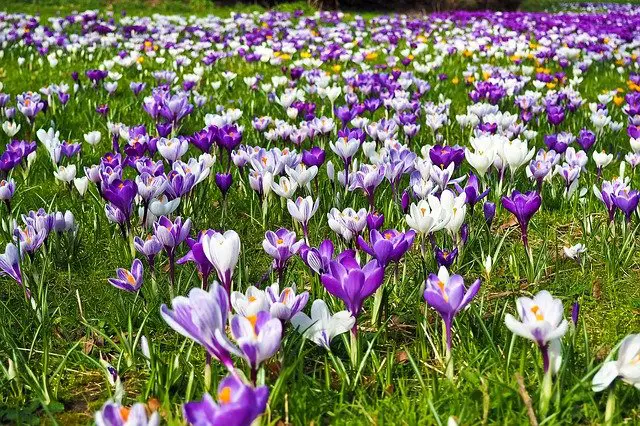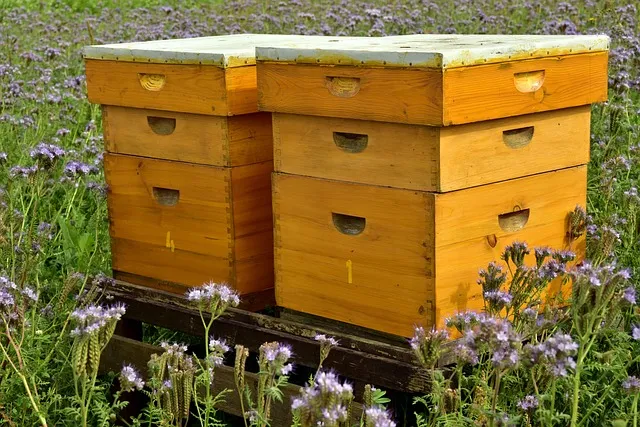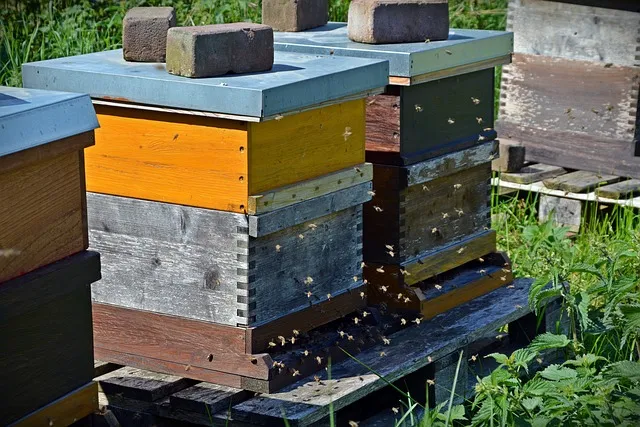How to Make a Bee-Friendly Garden
Honey bees collect nectar from flowers to make honey for their use. They also gather pollen which they store in the pollen sacs located on their hind legs to meet protein needs for their colonies. One way of helping our fantastic friends is to create a bee-friendly garden for them. They love plants with abundant nectar and pollen. This will lure them into spending more time in our gardens. Surprisingly, plants or flowers bred to please human eyes due to size or complexion are sometimes sterile and offer little or no help to pollinators.
Similar Articles you may like to read –
30 Best Flowers That Attract Bees, Butterflies, and Pollinators to Garden
Approximately how many flowers must bees visit to produce one pound of honey?
Flowers Plants That Do Not Attract Honey Bees and Other Insects
Basic Supplies For Beekeeping beginners | Beekeeping Equipment
Scents
Bees are sensitive to smell and are attracted to flowers with a sweet-smelling scent.
Colors
Honey bees are color blind to red hue. When you want to make a bee-friendly garden, consider plants with purple, blue, white, and violet.
Shape
Bees are attracted to flower shapes that suit them. Plants with double petals make it hard for them to access. They prefer flat or bowl-shaped flowers with open stamens and single petals.
How to Make a Bee-Friendly Garden
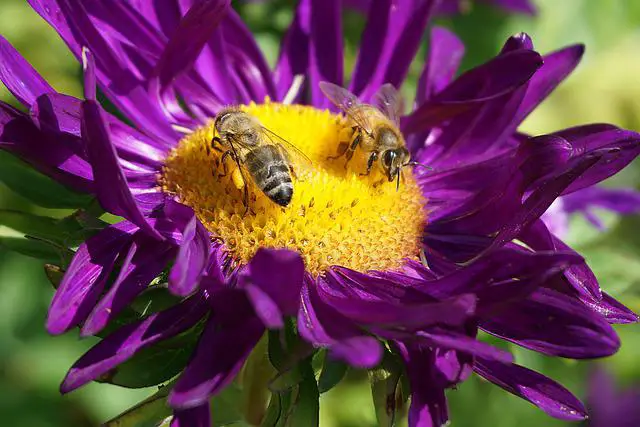
Choose Plants that Attract Bees
Bees have good color vision and are attracted by purple, blue, violet, white, and yellow with a sweet-smelling scent. You should include all types of crops; annuals, perennials, trees, fruits, herbs, and vegetables. In addition, consider planting plants that are native to your area to attract native bee species.
Choose Plants that Bloom at Different Seasons
Consider plants with different blooming schedules in your garden to help the bees collect nectar and pollen all year long. Ensure to mix early and late-season flowering plants. This will ensure that your garden is full of flowers and buzzing creatures from early spring and even after summer. It will also ensure diversity and variation of nectar and pollen in their diet. Here are some of the bee-friendly blooms in different seasons:
Spring: pussy willow, bluebells, crocus, cherry, apple trees, dandelion
Summer: strawberry, lavender, foxgloves, chives, comfrey, cornflower, thyme, allium, honeysuckle, catmint, poppy, thistle, Echinacea, sweet pea,
Fall: sedum, sage, abelia, honeysuckle, yarrow,
Winter: winter aconite, snowdrops, mahonia,
Consider Plants with Long Blooming Cycles
Long flowering species will keep the bees coming back to your garden and hanging around for longer.
Allow Your Plants to Flower
If you are planting herbs and vegetables in your garden, you can harvest but leave the plants intact. You can leave it in the garden until the flowers are gone.
Provide a Fresh Source of Water
Bees require water to stay hydrated and cool their nests in the hot seasons. Ensure there is a shallow source of clean water available in your garden. You can just put a bit of water in a tray and place some pebbles to give the bees a solid foundation when they are drinking. This will keep them from drowning.
Avoid Pesticides, Herbicides, or Other Chemicals in Your Garden
Pesticides are toxic to bees and may kill most of them. It is one of the reasons for diminishing bee colonies. While bees are attracted to your garden by the blooming flowers, they will also come in contact with any other chemical that will be present. Avoiding pesticides in your garden will ensure that the chemicals do not poison the bees you have invited into your garden.
A high dosage of insecticides kills the bees instantly, while lower doses may disrupt their navigation and orientation skills. This may cause them to lose their direction back to their hive. When nectar contaminated with the chemicals gets back to the nest, it is transferred to the house bees and incorporated into making honey. Consuming the contaminated honey affects the development of larvae which affects future generations of the colony. Other than using chemicals in your garden, you can practice integrated pest management.
Don’t Take Away All the Weeds
Weeds like thistles, clovers, milkweed, and dandelions have abundant nectar and lure bees from far. Allow them to grow and flower in your garden.
Avoid Plants with Numerous Petals
Honey bees can’t feed on complex flower structures such as those with many petals since they are hard to navigate. They prefer flowers which they can easily access the pollen and nectar.
Consider Fruit Trees
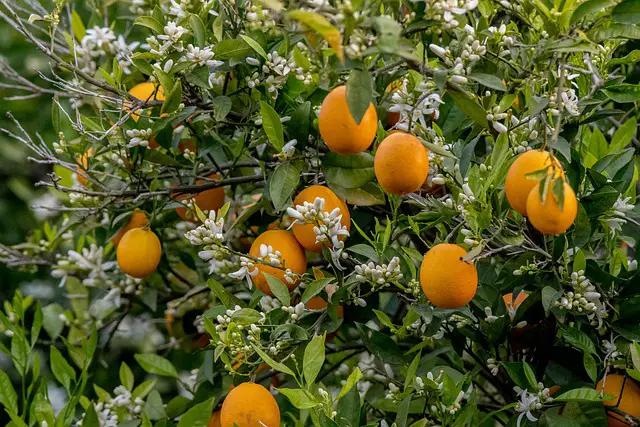
If the space in your garden allows, try to grow some fruit trees, especially citrus variety. Fruit trees provide mass fragrant flowers to your bees which they can feed on for a long time. Mass blooms help our buzzing friends save their energy and time by foraging in one spot. A single flowering lime tree can provide the same forage as 3000sq meters of wildflowers. The bees also love apple and cherry trees.
More articles you may like to read –
Do Bees Fly In The Rain? Where Do Bees Go When It Rains?
What Is The Biggest Problem For Bees? Threats To Honeybees
What Temperature Is Too Cold For Bees?
Do Bees Like The Full Sun?
Group the Same Plants Together
Honey bees visit one type of flower on every foraging trip. This is known as flower fidelity and is what makes them effective pollinators. By planting large clumps of single pieces together, you save the bees energy and optimize their foraging trips.
Create a Bee Hotel
Creating a bee hotel is a great way to boost diverse bees in your garden, especially the solitary species such as mason bees and leaf cutters. Solitary bees lay their eggs in hollow cavities and leave some food reserves for the emerging larvae to consume. The larvae hatch, pupate and emerge from the cavities. You can easily make a bee hotel using a wooden box and several stems of varying diameters for bees to nest in.
Plant Medicinal Herbs
Bees use some aromatic herbs such as thyme, oregano, and lavender to boost their health. Such plants help them to fight the disease-spreading mites.
Maintain Your Flowering Plants
Water the plants during their blooming season to enhance them to produce more flowers for a longer period of time. A water-deprived plant won’t produce new flowers. You can also prolong the plant’s blooming season by dead-heading. This entails pinching or cutting -off the flower stem below the flower or above the first set of healthy leaves.
Make Bee Hotels
One fun way to attract more bees to your garden is by making bee hotels. Bee hotels are like tiny houses where solitary bees can nest and lay their eggs. You can create bee hotels using materials like bamboo sticks, hollow reeds, or drilled wooden blocks. Arrange these materials in a container or box, making sure they’re secure and protected from rain. Place your bee hotel in a sunny spot with plenty of flowers nearby. Solitary bees, like mason bees and leafcutter bees, will appreciate the cozy shelter and will help pollinate your garden plants. Making bee hotels is a simple and rewarding way to support bee populations in your area.
FAQs
What is the purpose of a bee garden?
A bee garden helps in the reproduction and conservation of bees by creating an ideal habitat.
Is it reasonable to have bees in your garden?
Bees help to pollinate our crops, increasing the yields. Many plants depend on bees for pollination. Bees also produce honey and other products which are beneficial to our health.
What are some of the best flowers for honey bees?
Some of the favorite flowers for bees include bee balm, purple cornflower, sunflowers, crocus, and lavender.

